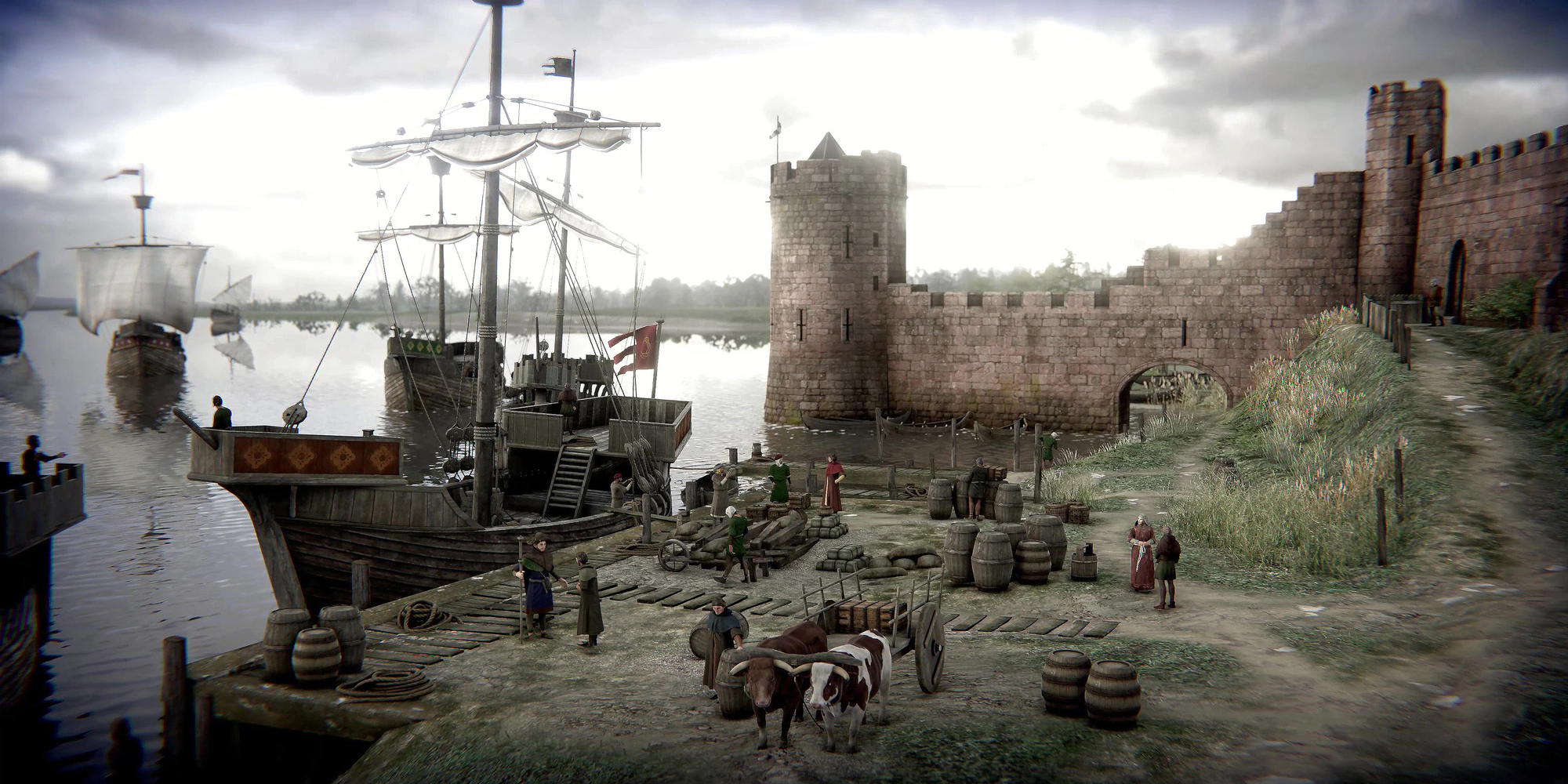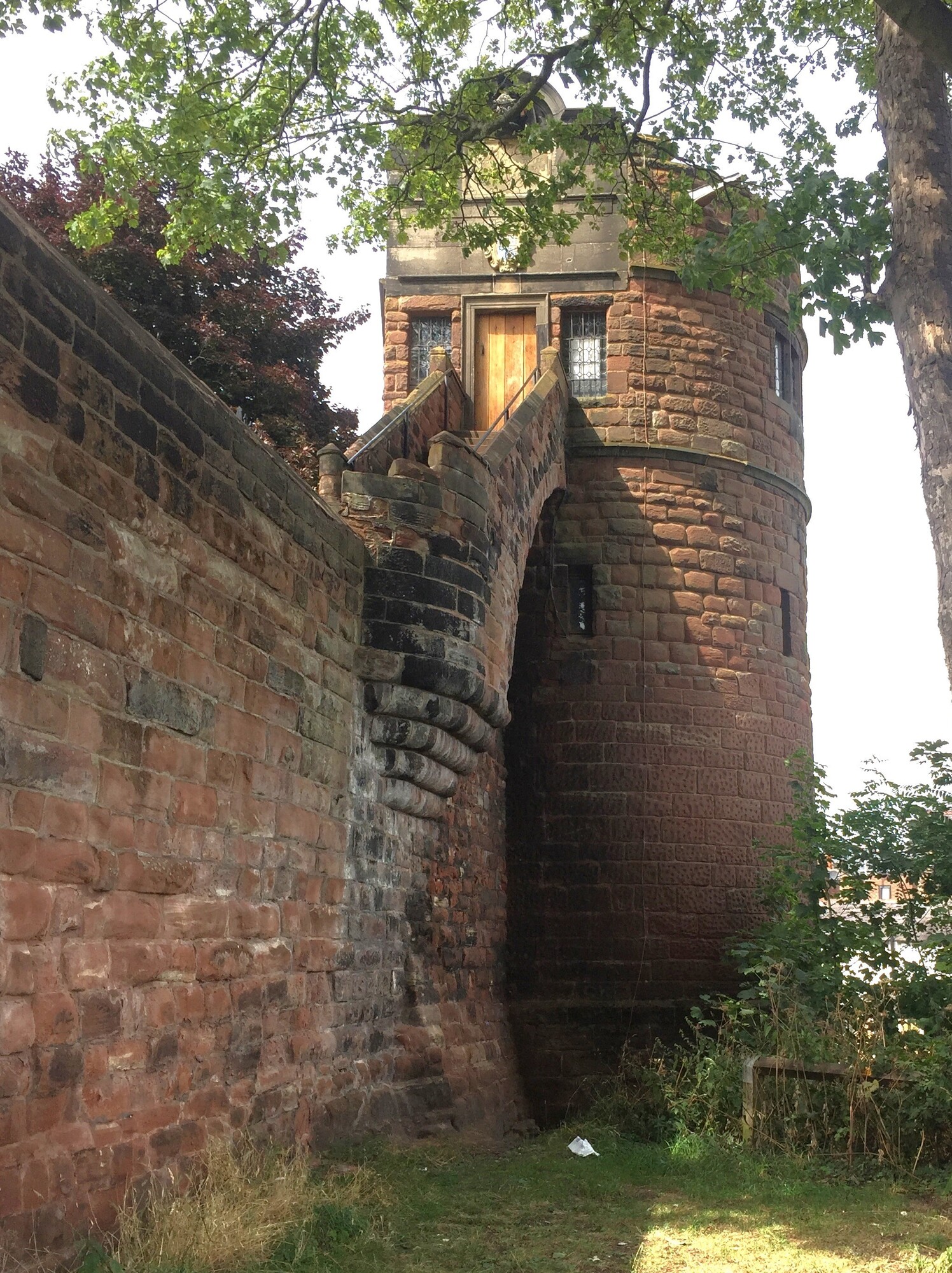Two Towers – Our Lecturers Share the Lesser-known History of Chester
Professor Katherine Wilson and Dr Jonathan Worton talk about the historical significance of King Charles' Tower and The Water Tower in Chester, along with how they feature in our History degree.

You are spoilt for choice in Chester if you're a fan of historically significant spots. The Medieval Chester Rows, The Roman Baths, and the Chester City Walls are our well-known landmarks which you can explore as you study with us, or if you visit us for an Open Day. Our History lecturers invite you to go one step further and discover the lesser-known historical sites, which we even incorporate into our History degrees.
The Water Tower

Digital reconstruction image © Martin Moss, Dextra Visual
The Water Tower is now an enigmatic place, but a bit of historical digging shows that it is a crucial monument to Chester's role as the most important medieval and early modern port and trading centre in North West England.
For that reason, it features on field trips for my second-year optional module on the commercial and consumer revolutions of the late Middle Ages.
The Water Tower was an extension to the North West corner of the City Walls. A context was probably King Edward II's garrisoning and provisioning of castles such as those at Beeston, Denbigh and Holt, prompting the city to consider its own defences.
In 1322, John of Helpston was placed under contract to construct it for £100 and it may have been completed by 1325. Originally reaching into the Dee, it was likely intended to observe shipping and enforce tolls. The Water Tower is a reminder of Chester's role as a seaport and as a node in two interlinked routes – via the Irish Sea to the Atlantic Seaboard of France and Spain, and via London to the Low Countries and Germany.
First, the Wirral was a point of transhipment to Chester for heavier cargoes like wine and millstones, which were transferred into smaller crafts capable of navigating the Dee to Chester or into carts for transport overland. Second, the Portpool was a docking point for medium-sized vessels carrying fish, Welsh slates, woollen cloth, hardware, and malt. Third, a port protected by the Water Tower received smaller vessels, with averages of 40-50 ships per year from the 1420s to the 1500s.
Such ships travelled between Chester, Ireland, Brittany, Gascony, Spain, and Portugal. However, within a century, the silting of the River Dee undermined the original function of the Water Tower and it now stands on dry land overlooking a park.
Fortunately, thanks to my UKRI AHRC funded research and public engagement project, The Mobility of Objects Across Boundaries 1000-1700, we can watch the excellent reconstruction produced by Martin Moss of Dextra Visual in this video.
King Charles' Tower (part of the Chester City Walls) – A Survival from the Civil War

Image © Dr Jonathan Worton
This Chester tower was not named in honour of the current monarch, but after his Stuart namesake King Charles I, who waged a bitter civil war against his parliamentarian opponents from 1642 to 1646.
The plaque (which you can go and see for yourself) above the tower door records: "King Charles I stood on this tower Sept. 24 1645, and saw his army defeated on Rowton Moor".
The battle of Rowton Heath, which as a mainly cavalry engagement covered a wide area, was fought two miles or so south-east of Chester; so if the King looked on from this tower (and he probably did) his best view would have been of his beaten soldiers retreating through Chester's fortified eastern suburbs after their rout by parliamentary troops commanded by General Sydenham Poyntz.
The royalist soldier and diarist Richard Symonds, an eyewitness, noted how at the beginning of the battle royalist cavalry "on Chester side of the river Dee, charged Poyntz his horse [cavalry], beat them and took some cornets [cavalry flags]. But they beat us again for it".
"Nine hundred prisoners of ours taken and carried to Nantwich [the parliamentarian headquarters in Cheshire]", Symonds gloomily concluded.
Royalist Chester would go on to endure a bitter siege until the city was surrendered to parliamentarians in early February 1646. King Charles' tower (also known as the Phoenix Tower) formed part of Chester's medieval defences and has been extensively restored since King Charles’s fateful visit in autumn 1645.
Make sure to check out our History BA (Hons) course page to see how you can apply and learn more about historically significant movements and sites from Jonathan and Katherine, along with how you can explore your own historical passions.